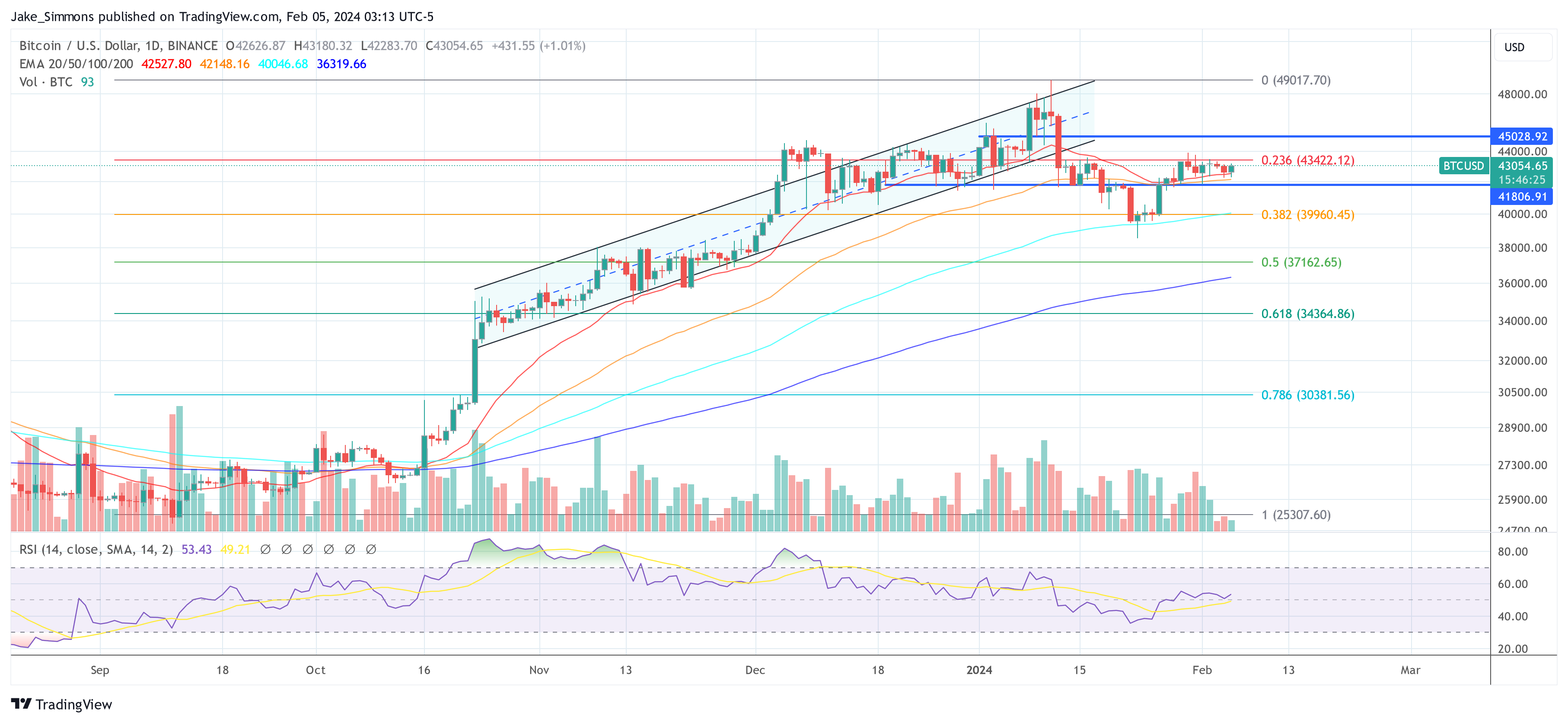In a recent analysis, Fred Krueger, the former founder and chairman of Traffic Marketplace, offered a nuanced explanation for the seemingly paradoxical situation in which the Bitcoin price has fallen despite the inflow of more than $5 billion in new assets through Exchange-Traded Funds (ETFs). ). from BlackRock and Fidelity. Since January 11, the first day of trading for the ten spot ETFs, the Bitcoin price is currently down 13% (sometimes more than 21%).
Why isn’t the Bitcoin price going up?
Krueger’s insights, shared via X (formerly Twitter), delve into the complex dynamics of the market and recent interactions with emerging financial instruments. Krueger’s analysis begins by highlighting a key strategy adopted by arbitrage traders in late June 2023 in anticipation of the ETF’s launch.
He stated: “At the end of June 2023, in anticipation of an ETF, arbitrageurs will be placing Long GBTC and short BTC Futures trades.” According to Krueger, this maneuver initially had a negative effect on the price of Bitcoin. However, its effects were masked by the overall market rally at the time.
Crucially, this strategy began closing the discount on Grayscale Bitcoin Trust (GBTC) while simultaneously increasing open interest on the Chicago Mercantile Exchange (CME). With the adoption of the ETFs, these arbitrage traders changed their strategies. Krueger explains: “Once the ETFs were approved, the arbs ended trading. This time they sold GBTC for BTC and bought Futures.”
He describes this action as market neutral. The sale of GBTC necessitated an actual sale of Bitcoin, which balanced with the purchase of futures. This dynamic led to a decline in open interest in CME, a trend that was observed and reported.
There was more going on
Krueger also sheds light on the makeup of demand for new ETFs, noting that “approximately 1.5 billion of the 5 billion in new ETF demand was actually recycled from GBTC into tax-neutral accounts in search of lower fees.” This recycling of funds, while significant, did not represent new capital entering the Bitcoin market, but rather a redistribution of existing investments.
The analysis further identifies external market pressures, most notably the $1 billion sale of GBTC by Sam Bankman-Fried (SBF), founder of FTX. Krueger notes, “This sale, and the headline sale of GBTC, distorted the market, and therefore people concluded the ETF was a failure.”
However, Krueger argues that this perspective ignores the reality that the ETFs actually created net new buying pressure of more than $3.5 billion. Despite the substantial buying activity stimulated by the new ETFs, the broader market reaction was influenced by a combination of factors, including the selling of FTX and the unwinding of arbitrage positions.
Krueger concludes his analysis by stating, “The brutal buying of the new ETFs was far greater than anyone predicted, modulo the FTX sales and the arb unwinding.” Overall, Krueger is great optimistic:
Over the next 30 to 60 days there will be 20 to 40 trading sessions. I would bet that this will generate between 4 and 6 billion USD in new inflows. At a market cap of 850 billion it’s pretty easy to see that this could move the market by 50% or to 64K. Actually always high.
At the time of writing, BTC was trading at $43,054.

Featured image created with DALLE, chart from TradingView.com
Disclaimer: The article is for educational purposes only. It does not represent NewsBTC’s views on buying, selling or holding investments and of course investing involves risks. You are advised to conduct your own research before making any investment decisions. Use the information on this website entirely at your own risk.

